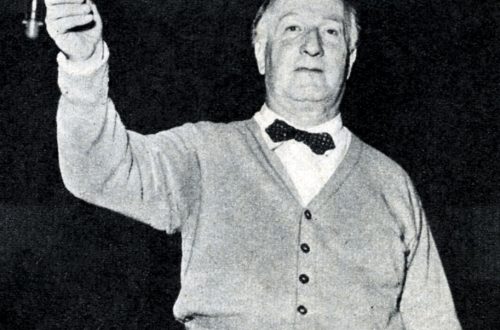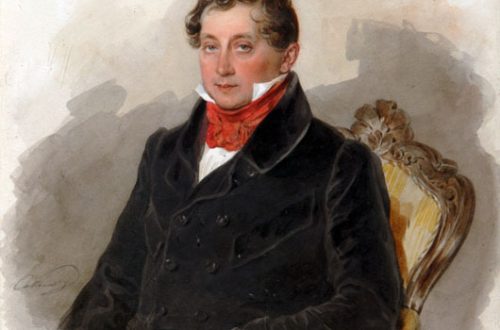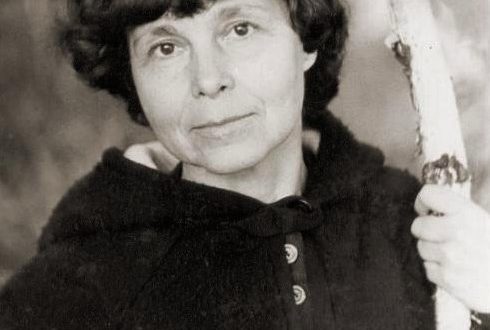
Claudio Monteverdi (Claudio Monteverdi) |
Claudio Monteverdi
Monteverdi. Cantate Domino
Monteverdi defends the rights of feelings and freedom in music. Despite the protests of the defenders of the rules, he breaks the fetters in which music has entangled itself, and wants it to follow only the dictates of the heart from now on. R. Rollan
The work of the Italian opera composer C. Monteverdi is one of the unique phenomena in the musical culture of the XNUMXth century. In his interest in man, in his passions and sufferings, Monteverdi is a true Renaissance artist. None of the composers of that time managed to express in music the tragic, feeling of life in such a way, to come closer to comprehending its truth, to reveal the primordial nature of human characters in such a way.
Monteverdi was born into a doctor’s family. His musical studies were led by M. Ingenieri, an experienced musician, bandmaster of the Cremona Cathedral. He developed the polyphonic technique of the future composer, introduced him to the best choral works by G. Palestrina and O. Lasso. Moiteverdi began to compose early. Already in the early 1580s. the first collections of vocal polyphonic works (madrigals, motets, cantatas) were published, and by the end of this decade he became a famous composer in Italy, a member of the Academy of Site Cecilia in Rome. From 1590, Monteverdi served in the court chapel of the Duke of Mantua (first as an orchestra member and singer, and then as a bandmaster). Lush, rich court Vincenzo Gonzaga attracted the best artistic forces of the time. In all likelihood, Monteverdi could meet with the great Italian poet T. Tasso, the Flemish artist P. Rubens, members of the famous Florentine camerata, the authors of the first operas – J. Peri, O. Rinuccini. Accompanying the Duke on frequent travels and military campaigns, the composer traveled to Prague, Vienna, Innsbruck, and Antwerp. In February 1607, Monteverdi’s first opera, Orpheus (libretto by A. Strigio), was staged with great success in Mantua. Monteverdi turned a pastoral play intended for palace festivities into a real drama about the suffering and tragic fate of Orpheus, about the immortal beauty of his art. (Monteverdi and Striggio retained the tragic version of the myth’s denouement – Orpheus, leaving the kingdom of the dead, violates the ban, looks back at Eurydice and loses her forever.) “Orpheus” is distinguished by a wealth of means surprising for an early work. Expressive declamation and a wide cantilena, choirs and ensembles, ballet, a developed orchestral part serve to embody a deeply lyrical idea. Only one scene from Monteverdi’s second opera, Ariadne (1608), has survived to this day. This is the famous “Lament of Ariadne” (“Let me die …”), which served as a prototype for many lamento arias (arias of complaint) in Italian opera. (Lament of Ariadne is known in two versions – for solo voice and in the form of a five-voice madrigal.)
In 1613, Monteverdi moved to Venice and until the end of his life remained in the service of Kapellmeister in the Cathedral of St. Mark. The rich musical life of Venice opened up new opportunities for the composer. Monteverdi writes operas, ballets, interludes, madrigals, music for church and court festivities. One of the most original works of these years is the dramatic scene “The Duel of Tancred and Clorinda” based on the text from the poem “Jerusalem Liberated” by T. Tasso, combining reading (the part of the Narrator), acting (the recitative parts of Tancred and Clorinda) and an orchestra that depicts the course of the duel , reveals the emotional nature of the scene. In connection with the “Duel” Monteverdi wrote about the new style of concitato (excited, agitated), contrasting it with the “soft, moderate” style that prevailed at that time.
Many of Monteverdi’s madrigals are also distinguished by their sharply expressive, dramatic character (the last, eighth collection of madrigals, 1638, was created in Venice). In this genre of polyphonic vocal music, the composer’s style was formed, and the selection of expressive means took place. The harmonic language of madrigals is especially original (bold tonal comparisons, chromatic, dissonant chords, etc.). In the late 1630s – early 40s. the operatic work of Monteverdi reaches its peak (“Return of Ulysses to his homeland” – 1640, “Adonis” – 1639, “The Wedding of Aeneas and Lavinia” – 1641; the last 2 operas have not been preserved).
In 1642 Monteverdi’s The Coronation of Poppea was staged in Venice (libretto by F. Businello based on Tacitus’ Annals). The last opera of the 75-year-old composer has become a real pinnacle, the result of his creative path. Specific, real-life historical figures act in it – the Roman emperor Nero, known for his cunning and cruelty, his teacher – the philosopher Seneca. Much in The Coronation suggests analogies with the tragedies of the composer’s brilliant contemporary, W. Shakespeare. Openness and intensity of passions, sharp, truly “Shakespearean” contrasts of sublime and genre scenes, comedy. So, Seneca’s farewell to the students – the tragic culmination of the oaera – is replaced by a cheerful interlude of a page and a maid, and then a real orgy begins – Nero and his friends mock the teacher, celebrate his death.
“His only law is life itself,” R. Rolland wrote about Monteverdi. With the courage of discoveries, Monteverdi’s work was far ahead of its time. The composer foresaw a very distant future of musical theater: the realism of operatic dramaturgy by W. A. Mozart, G. Verdi, M. Mussorgsky. Perhaps that is why the fate of his works was so surprising. For many years they remained in oblivion and again returned to life only in our time.
I. Okhalova
The son of a doctor and the eldest of five brothers. He studied music with M. A. Ingenieri. At the age of fifteen he published Spiritual Melodies, in 1587 – the first book of madrigals. In 1590, at the court of the Duke of Mantua, Vincenzo Gonzaga became a violist and singer, then the leader of the chapel. Accompanies the duke to Hungary (during the Turkish campaign) and Flanders. In 1595 he marries the singer Claudia Cattaneo, who will give him three sons; she will die in 1607 shortly after the triumph of the Orpheus. Since 1613 – a lifelong post of head of the chapel in the Venetian Republic; the composition of sacred music, the last books of madrigals, dramatic works, mostly lost. Around 1632 he took the priesthood.
Monteverdi’s operatic work has a very solid foundation, being the fruit of previous experience in composing madrigals and sacred music, genres in which the Cremonese master achieved incomparable results. The main stages of his theatrical activity – at least, based on what has come down to us – seem to be two clearly distinguished periods: the Mantua at the beginning of the century and the Venetian, which falls in its middle.
Undoubtedly, “Orpheus” is the most striking statement in Italy of the vocal and dramatic style of the early seventeenth century. Its significance is determined by the theatricality, a great saturation of effects, including orchestral, sensitive appeals and incantations, in which the Florentine chant recitation (very enriched with emotional ups and downs) seems to be struggling with numerous madrigal inserts, so that the singing of Orpheus is an almost classic example of their competition.
In the last operas of the Venetian period, written more than thirty years later, one can feel the various stylistic changes that have taken place in Italian melodrama (especially after the flowering of the Roman school) and the corresponding changes in expressive means, all presented and combined with great freedom in a very wide, even prodigal dramatic canvas. Choral episodes are removed or significantly reduced, ariose and recitative are combined flexibly and functionally depending on the needs of the drama, while other, more developed and symmetrical forms, with clearer rhythmic moves, are introduced into theatrical architectonics, anticipating the subsequent technique of autonomizing the operatic language, introduction, so to speak, formal models and schemes, more independent of the ever-changing demands of poetic dialogue.
However, Monteverdi, of course, did not run the risk of moving away from the poetic text, since he was always true to his ideas regarding the nature and purpose of music as a servant of poetry, helping the latter in its exceptional ability to express human feelings.
We must not forget that in Venice the composer found a favorable atmosphere for a libretto with historical plots that advanced along the path of the search for “truth”, or, in any case, with plots conducive to psychological research.
Memorable is Monteverdi’s small chamber opera “The Duel of Tancred and Clorinda” to the text of Torquato Tasso – in fact, a madrigal in a pictorial style; placed in the house of Count Girolamo Mocenigo during the carnival of 1624, he excited the audience, “almost tearing out her tears.” This is a mixture of oratorio and ballet (events are depicted in pantomime), in which the great composer establishes a close, persistent and precise connection between poetry and music in the style of the purest melodious recitation. The greatest example of poetry set to music, almost conversational music, “Duel” includes awesome and sublime, mystical and sensual moments in which the sound becomes almost a figurative gesture. In the finale, a short series of chords turns into a radiant “major”, in which the modulation comes to an end without the necessary leading tone, while the voice performs a cadenza on a note not included in the chord, since at this moment a picture of a different, new world opens up. The pallor of the dying Clorinda signifies bliss.
G. Marchesi (translated by E. Greceanii)





